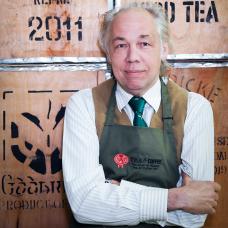History of Chai Tea
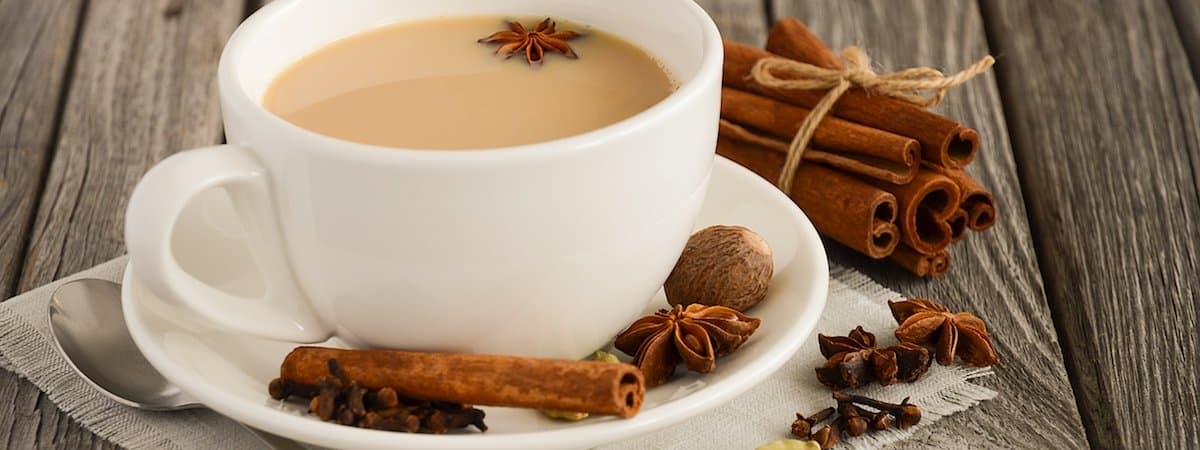
Chai is a type of Indian Black Tea flavoured with herbs and spices. Varieties of it date back millennia, many of which today are a staple of society. Indeed, it’s difficult to walk down a street in Mumbai or New Delhi without being offered a cup of this delightful infusion. But how did it all begin? And why does it remain as popular now as it was thousands of years ago?
In the blog below, we will explore the history of Chai Tea and how it came to enthral millions across India and around the world. From the golden days of Ayurveda, the arrival of the British Raj, and right through to the 21st century, this beverage has extraordinary origins.
Let’s explore everything it has to offer before indulging with The Kent and Sussex Tea and Coffee Company.
Table of contents
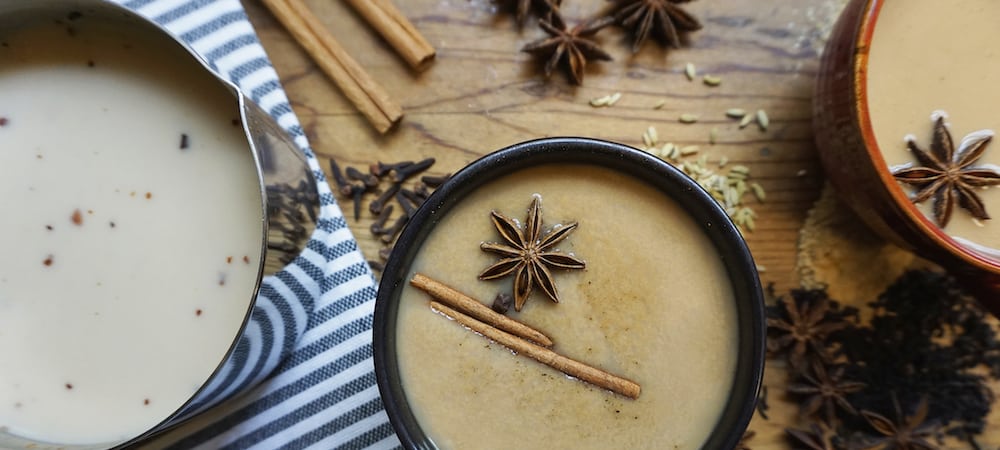
Ancient History of Chai Tea
Contrary to popular belief, Black Tea only dates back a few hundred years. Long before its discovery, people living in modern-day India brewed Herbal Tea.
Most of these infusions had a close association with Ayurveda, which was (and still is) a holistic view of medicine. During this period, perhaps 5,000 years ago, a herbal form of Chai Tea was known as a “Kadha”.
Kadhas (or “Karhas”) were Ayurvedic decoctions made with many herbs and spices to balance one’s “doshas”. These, in turn, are energies in the body that make up every individual, of which there are three: Vata, Pitta and Kapha.
Each dosha, according to Ayurveda, has a different function, providing spiritual harmony when balanced. (You can read more about this in our “What is Chai Tea?” article.)
Legend has it that a reigning King in either India or Siam (present-day Thailand) first created the Kadha as a cleansing, vivifying infusion. Another legend, however, alludes to it being the “invention” of a Buddhist monk following a trip to China.
The story goes that the monk observed a local ritual of chewing wild leaves and so brought and subsequently built on the tradition back in India.
Some historians believe that during the time of Emperor Ashoka (unknown – circa 230 BCE), the Royal Court drank Kadhas for symbolic purposes. There is also evidence indicating that this early version of Chai played a part in the signing of peace treaties and during moments of political consolidation.
One way or another, the Kadha had a significant influence on the history of Chai Tea.
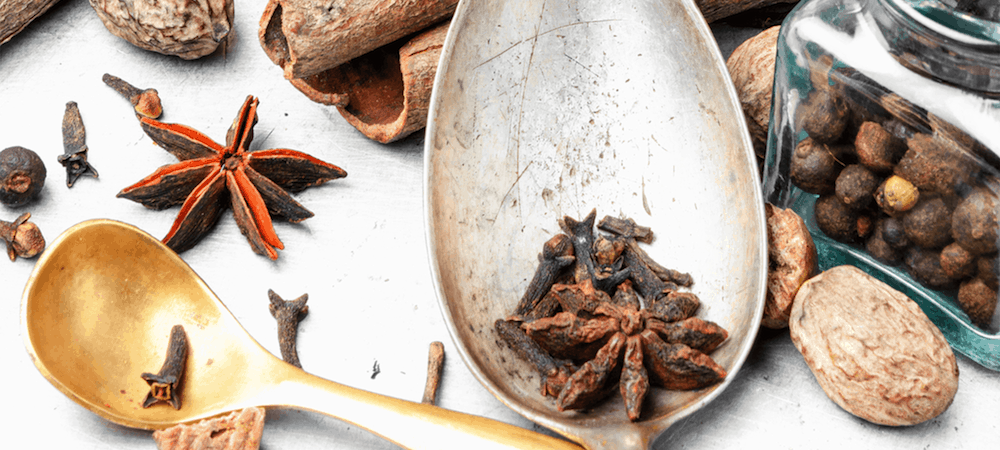
Early Colonial History of Chai Tea
Several centuries later, a Dutch traveller named Jan Huyghen van Linschoten (1563-1611) witnessed the beginnings of the history of Chai Tea for himself.
Although still in its infancy during this period, there is no question that the modern-day beverage was starting to take shape. Linschoten later wrote: “Indians ate the leaves as a vegetable with garlic and oil and boiled the leaves to make a brew”.
The eventual inclusion of so-called “real” Tea leaves (from the Camellia sinensis plant), however, has a somewhat more controversial background. It begins with the British colonisation of India, a time of great upheaval for the lives of countless locals. Two deciding factors within the British Empire would play a tremendous role in the birth of the Indian Tea industry.
First came the unrest in the thirteen American colonies, most famously the 1773 Boston Tea Party. This event went on to become one of the sparks that led to revolution, resulting in the founding of the United States of America. With Britain losing a large portion of North America, its Empire also struggled to maintain the monopoly over Tea trade in the “new world”.
The second deciding factor was ever-growing tensions between Britain and China. This eventually led to the Empire losing its primary source of Tea, of which the knock-on effects proved disastrous.
Indeed, the country was heading for economic ruin, and so it turned to colonial India for help. The British knew that if Tea could be grown there, it might save the nation from bankruptcy.
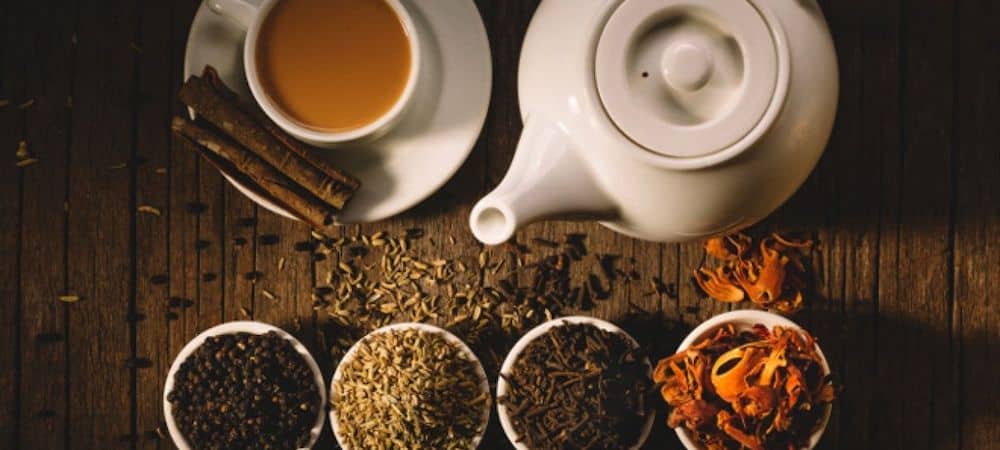
Discovery of Indian Tea
In 1774, Warren Hastings, an English statesman and Governor of the Presidency of Fort William (Bengal), decided to act. He sent a shipment of Chinese Camellia sinensis var sinensis seeds to George Bogie, the British emissary in Bhutan, for planting.
However, the experiment failed due to the plants withering in the fierce heat. A second attempt took place in 1780 – again, though, it was unsuccessful.
It wasn’t until 1823 that a Scottish explorer made a remarkable discovery that would change the history of Chai Tea forever. Robert Bruce had travelled to Rangpur (present-day Sibsagar) in Upper Assam to meet Bessa Gaum, the chief of the Singpho tribe. There, he was presented with leaves from a plant resembling that of Camellia sinensis var sinensis.
Robert went on to clarify his findings with his brother, Charles Alexander Bruce, who studied the leaves at the Calcutta Botanical Gardens. He eventually confirmed that the plant was, indeed, a variety of the Tea plant, later dubbed Camellia sinensis var assamica. This would become known as Assam Tea, which in turn would become the base ingredient of Chai.

Chai in the Early 20th Century
Despite Bruce’s findings, most Indians didn’t drink “real” Tea by the beginning of the 1900s. Instead, they preferred Kadhas – a sore point for the British Raj.
During the First World War (1914-1918), Britain needed a boost to the economy to fund the war effort. In British India, this manifested in the form of an aggressive marketing campaign to encourage Indians to drink Tea.
The British-run Indian Tea Association introduced “Tea-breaks” to factories, textile mills and mines in an attempt to sway the tastes of Indians. At Railway stations, vendors known as Chai Wallahs began selling Tea goods to travellers.
The competitive business of selling Tea soon saw vendors attempting to stand out from the crowd. They subsequently added herbs and spices used in Kadhas to cater to Indian tastes.
And so arrived the modern-day Chai Tea – a combination of Indian culture with British determination to sustain the Empire. Nevertheless, Tea remained expensive during this period – even with herb and spice additions.
Therefore, to lower the cost of making Chai Tea, Wallahs used milk and sugar. This catered to not only the taste of Indians, but also those of the West!
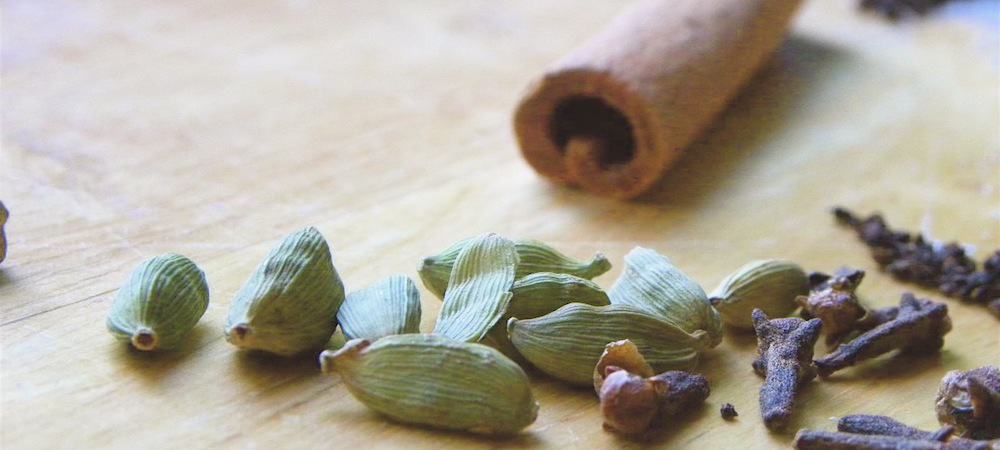
Late 20th Century and Today
With independence sentiment growing in India during the mid-1900s, the now-world-famous Mahatma Gandhi actually discouraged the drinking of Tea due to its association with the British Raj.
However, when India finally (and rightfully) attained its freedom from Britain in 1947, sales again improved. Of all the choices, though, none were quite as popular as Chai Tea. This, of course, remains the case today.
From region to region, village to village, and even household to household, Chai Tea recipes differ significantly from one another. Each one has something unique, indeed extraordinary, to offer.
Best of all, many varieties can now be found here at The Kent and Sussex Tea and Coffee Company. Why not find out for yourself? You won’t be disappointed!

 Loose Leaf Tea
Loose Leaf Tea Pyramids
Pyramids Tea Bags
Tea Bags Africa
Africa Assam
Assam Ceylon
Ceylon Chinese
Chinese Darjeeling
Darjeeling European
European Indian
Indian Japan
Japan Nepal
Nepal South East Asia
South East Asia Ayurveda Tea
Ayurveda Tea Black Tea
Black Tea Chai Tea
Chai Tea Flowering Tea
Flowering Tea Fruit Tisanes
Fruit Tisanes Green Tea
Green Tea Herbal Tea
Herbal Tea Matcha Tea
Matcha Tea Oolong Tea
Oolong Tea Organic Tea
Organic Tea Pu erh Tea
Pu erh Tea Rooibos Tea
Rooibos Tea White Tea
White Tea Asian Coffee
Asian Coffee Caribbean Coffee
Caribbean Coffee Central American Coffee
Central American Coffee South American Coffee
South American Coffee Coffee Blends
Coffee Blends Decaffeinated Coffee
Decaffeinated Coffee Espresso Coffee
Espresso Coffee Ethically Sourced Coffee
Ethically Sourced Coffee Flavoured Coffee
Flavoured Coffee Organic Coffee
Organic Coffee Single Origin Coffee
Single Origin Coffee Chocolate 1
Chocolate 1 Chocolate 2
Chocolate 2 Chocolate 3
Chocolate 3 Chocolate 4
Chocolate 4 Chocolate 5
Chocolate 5 Chocolate 6
Chocolate 6 Chocolate 7
Chocolate 7 Chocolate 8
Chocolate 8 Chocolate 9
Chocolate 9 Loose Tea Filters
Loose Tea Filters Tea Accessories
Tea Accessories Tea Bricks
Tea Bricks Tea Caddies
Tea Caddies Tea Caddy Spoons
Tea Caddy Spoons Tea Gift Ideas
Tea Gift Ideas Tea Infusers
Tea Infusers Tea Strainers
Tea Strainers